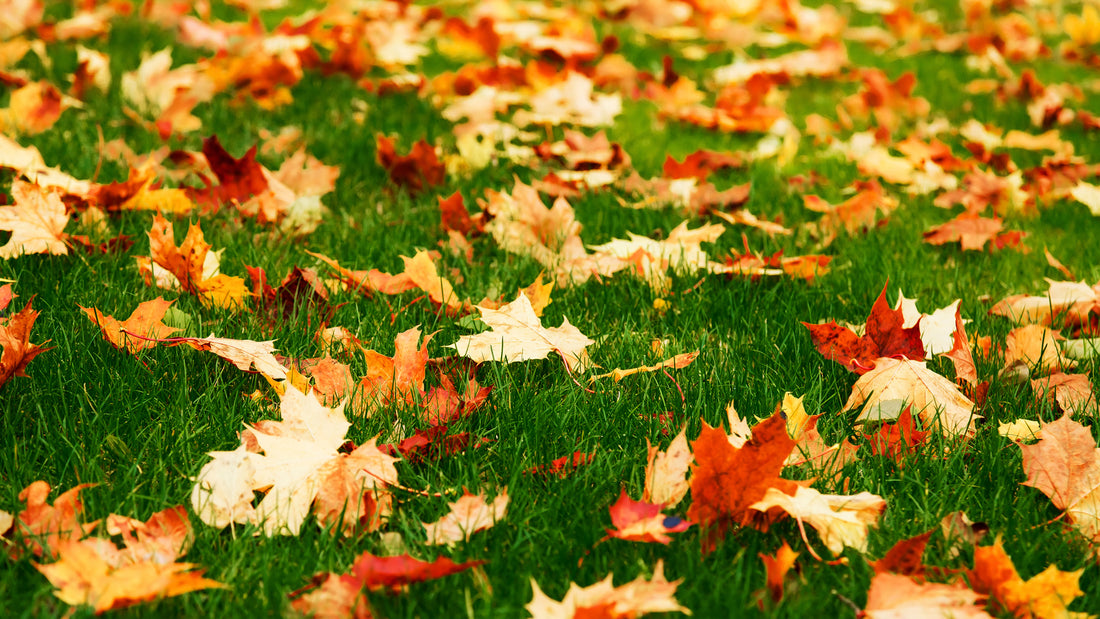Fall is an important time to care for lawns. As a landscaper or groundskeeper, there are some crucial steps you should follow to provide the best care for the lawns and sports fields:
-
Aeration:
Fall is a great time to aerate lawn. Aerating involves perforating the soil with small holes to allow air, water, and nutrients to penetrate deeper into the root zone. A core aerator is ideal for this purpose. This mechanical practice helps relieve soil compaction and promotes root growth. A sandy top-dress can be applied very thinly to the surface at this time. It’s very important to rake this into the core aeration holes and make sure the blades of grass are standing upright and not buried under the top-dress.
-
Overseeding:
Ideally overseeding would take place after aerating and topdressing. Timing is also important. Seeding should take place in the first 2-3 weeks of September, as the warm soil and available moisture will provide great germination rates. Later seeding may cause seed die off from frost or cool temperatures. Overseeding lawn with grass seed can be done without aeration and topdressing. We recommend Richardson Seed 4-Way Overseeding Mix to reinvigorate your lawn. This helps fill in thin or bare areas, improving the overall density of the grass. The holes created by aeration provide a conducive environment for seed germination. At Terralink, we sell a variety of Lawn seed mixes such as: RichLAWN Deluxe Lawn Seed, All Purpose Lawn Seed and Sun & Shade Lawn Seed.
-
Watering:
Keep the newly overseeded areas consistently moist until the new grass is well established. Watering deeply and less frequently encourages deep root growth. After the new grass is established, you can transition to a normal watering routine.
-
Fertilization:
Choose a balanced, slow-release fall fertilizer We have a number of options. Part of the fertilization route you choice to take depends on when and how often you would fertilize before mid-late October. In early September, apply RichGROW 23-3-23 Summer Balanced. Later in September and in October RichGROW 15-5-30 and RichGROW 15-5-32 Winterizer would be appropriate. For recently sodded and newly seeded lawns consider RichGROW Flexxstart 16-32-6 and RichGROW FlexxGrow 18-18-18 with 50% SN (balanced blend). A fall and winter-ready fertilization provides essential nutrients for root growth and helps your lawn store energy for the winter, while giving grass a better chance for healthy grow in the spring.
Talk to your sales representative about the right approach for you. Always apply the fertilizers according to the recommendation on the label.
-
Soil Testing:
For large scale applications such as sportfields consider testing your soil's fertility in order to add nutrients that are deficient. Soil testing makes sure you you only apply what is needed, keeping your turf healthy while saving you money.
-
Liming & pH adjustment:
Maintaining an optimum pH of 6.0 to 7.5 will assist in nutrient availability and uptake. Using Dolopril granulated dolomitic limestone amends soils to desired pH as well as supplying much needed magnesium and calcium.
-
Pest and Weed Control:
Weeds: Fall is a good time to get a handle on your lawn weeds. It is also a great time to address any persistent pest issues. Applying herbicides like Trillion can reduce weeds in your lawn. Spot-treatments with Credit Xtreme can be an effective way of dealing with existing weeds. Consult with your sales rep as what is the right approach for you. Always read the label before using products.
Grub control: grub-GONE (also known as grub-TERMINATOR) (Bacillus thuringiensis) applied mid-September through October is an excellent way to get ahead of your grub problems. We recommend the use of grub-GONE in fall and spring. It is both safe to use and effective. With repeat applications grubs can be effectively controlled. Acelepryn provides turf managers unmatched season-long subsurface grub control with a single preventative application. Acelepryn delivers outstanding control of many key surface feeding pests including European chafer, Japanese beetle larvae and European crane fly larvae.
-
Mowing:
Once the new grass reaches about 3 inches in height, mow it down to around 2 inches. Regular mowing at the correct height promotes healthier grass and discourages weed growth.
By following these fall lawn care steps, you can ensure a healthy and beautiful turf surface throughout the year. Talk to a TerraLink sales team member to help you tailor your lawn care routine to the specific needs of your region and grass type. With proper care, your lawn will be ready to flourish when spring arrives.

